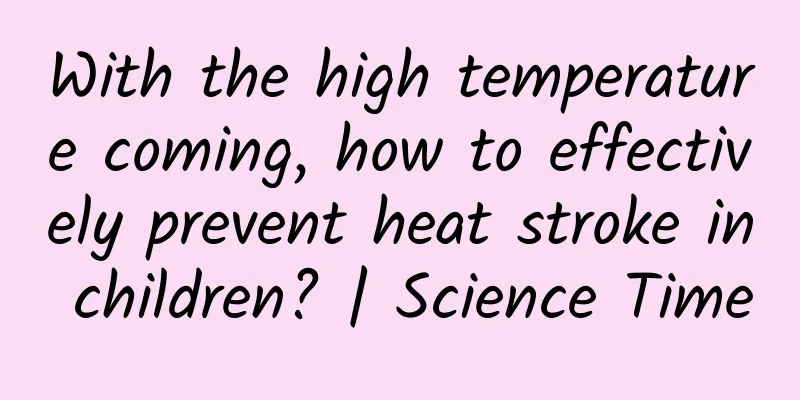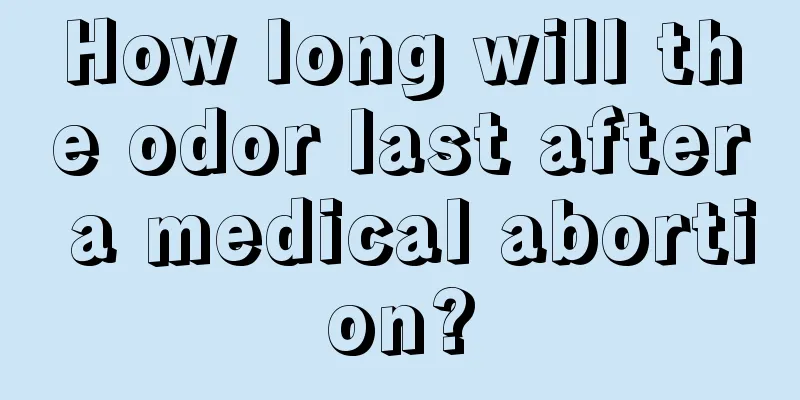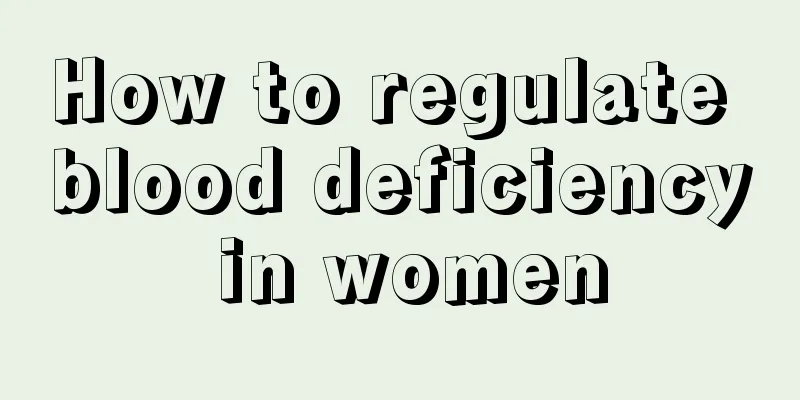With the high temperature coming, how to effectively prevent heat stroke in children? | Science Time

|
As the temperature rises and the sun becomes scorching, children spend more time playing outdoors and exercise more, which can easily make them feel uncomfortable or even suffer from heat stroke. Heatstroke is no small matter. Parents need to learn how to prevent heatstroke, how to identify the symptoms of heatstroke, and how to take care of children who suffer from heatstroke. Why are children more susceptible to heat stroke? Children's bodies are different from adults', and they are more susceptible to heat stroke for the following reasons. 1. High heat production: Children have a fast metabolism and produce more heat in their bodies. 2. High heat absorption: Children have a larger body surface area relative to their body weight, and absorb more heat in a high temperature environment. 3. Slow heat dissipation: The sweat glands on children's skin are not yet fully developed, and their ability to dissipate heat is relatively poor. 4. Poor regulation ability: Children's body temperature regulation center is still developing, and their ability to regulate body temperature is not strong enough. In what situations are children more likely to suffer from heat stroke? 1. Exposure to high temperature, high humidity, closed and strong sunlight environment for a long time. 2. When participating in sports activities or military training in summer. 3. Wearing too many clothes. 4. Being overweight or obese. 5. Having chronic diseases, such as diabetes, thyroid, diabetes insipidus, hypothalamus damage, etc. 6. Not able to express their feelings clearly, such as infants who cannot speak or children who are developmentally retarded and cannot express themselves accurately. 7. Having suffered from heat stroke before. Determine the severity? Symptoms of heat stroke: dizziness, headache, nausea, vomiting, fever, muscle cramps, convulsions, and even coma after exposure to high temperature and high humidity. Heat stroke can be divided into three stages: 1. Pre-heat stroke The main characteristics of this stage are: symptoms of heat stroke, normal or slightly elevated body temperature, no impaired consciousness and no organ damage. When children are exposed to high temperatures for a period of time, they will experience symptoms such as weakened spirits, fatigue, dizziness, headache, thirst, sweating, nausea and vomiting, and their body temperature will be normal or slightly elevated (usually <38°C). At this stage, children are conscious and have no signs of organ damage. At this time, the body is still in the compensatory period. With timely and correct treatment, the symptoms usually disappear in a short period of time; if the heat in the body continues to accumulate, it can progress to mild or even severe heatstroke. 2. Mild heat stroke The main characteristics of this stage are: significantly increased body temperature, signs of dehydration, unconsciousness and organ damage. The child's body temperature rises significantly, usually between 38 and 40 degrees Celsius, and there are signs of dehydration, such as cold and clammy skin, pale complexion, increased heart rate, oliguria or anuria, sunken eye sockets, poor skin elasticity, etc. When the above symptoms appear, the child should leave the high fever environment in time, cool down, and drink water. If the symptoms do not improve, the child should go to the hospital in time. After correct treatment, the child can usually recover within a few hours. 3. Severe heat stroke (heat cramps, heat exhaustion and heat stroke) This is the most dangerous situation. At this stage, there may be convulsions, impaired consciousness, accompanied by high fever and multiple organ dysfunction. The child's body temperature may be as high as 40°C or above, and may experience muscle spasms, syncope, coma, convulsions, delirium, abnormal mental behavior and other muscle and neuropsychiatric symptoms, and may be combined with multiple organ dysfunctions, such as hematuria, gastrointestinal bleeding, skin congestion, ecchymosis, shock, respiratory failure, etc. At this stage, the body enters the decompensation stage, which is fatal and needs to be immediately transferred to the nearest large hospital for treatment. What should I do if my child suffers from heat stroke? When there is a sign of heat stroke, the symptoms can usually be relieved quickly after on-site treatment. Children with mild or severe heat stroke need to go to the hospital for treatment. If a child is found to have symptoms of heat stroke, the principle of "one move, two reduce, three supplement, and four transfer" should be adopted for treatment. 1. Move the child away from a hot, humid, closed and sunny environment, and quickly move the child from a hot place to a cool and ventilated place. If conditions permit, move the child to an air-conditioned room. 2. Cooling Rapid and effective cooling is the most important measure for first aid for heat stroke. The body temperature should be reduced to below 40℃ as soon as possible within 30 minutes after the discovery of heat stroke. Cooling methods include: loosening or taking off tight clothing as soon as possible. When the baby has heat syndrome, the blanket should be unwrapped and cooled immediately, and the sweat-soaked clothes should be replaced in time. First use warm water, then use cold water to wipe the whole body. When sponging, ice packs can be placed on the forehead, bilateral neck, armpits, groin and other superficial places where the large arteries run. Fans or air conditioners can be used to increase convection and heat dissipation; for older children with clear consciousness, bathing and soaking can be used. It should be noted that oral antipyretic and analgesic drugs such as ibuprofen and acetaminophen are usually ineffective. 3. Rehydration Children with heatstroke are often accompanied by dehydration and electrolyte imbalance. Children should be given some room temperature water or electrolyte drinks in small amounts and multiple times. Do not drink too much at one time, otherwise it is easy to cause nausea, vomiting and other symptoms. Those who are unable to drink water on their own can go to the hospital for treatment and receive appropriate intravenous rehydration and other treatments under the doctor's evaluation. 4. Transfer For those with severe heatstroke, especially children with high fever, unconsciousness, convulsions and other neurological symptoms, they should be sent to the nearest hospital immediately. For children with mild heatstroke whose symptoms are not relieved after on-site treatment, they should also go to the nearest hospital as soon as possible. How to prevent heatstroke in children? 1. Environment In summer, children should arrange outdoor activities reasonably, try to do outdoor activities in the morning or evening, and avoid long-term outdoor activities at noon when the sun is shining brightly. It is best for children to stay in the shade when playing outdoors. They can carry a fan or a small portable electric fan with them. In hot and humid weather, they should play in cool indoor places, such as indoor playgrounds and indoor swimming pools. Avoid children staying alone in cars or small spaces. In hot weather, use electric fans and air conditioners to cool down the home, and open windows for ventilation regularly. 2. Clothing In a hot environment, the clothes and equipment children wear during activities will affect the efficiency of temperature regulation. They should choose light, breathable, light-colored clothes and change sweat-soaked clothes in time. For infants and young children, choose light blankets and avoid overheating them. 3. Drinking water In a hot environment, children should ensure that they drink enough water during activities. Water or electrolyte drinks are suitable drinks. Avoid drinks containing alcohol, coffee or high sugar content, because such drinks will further increase water loss. Children should also avoid drinking large amounts of cold drinks to avoid stomach cramps. 4. Diet In summer, eat more light and easily digestible food, eat less high-calorie, greasy, and spicy food, and eat more vegetables and fruits. Source: Student Health News |
<<: Why does milk seem to be not as delicious as before?
>>: Heat stroke is the main culprit of death caused by high temperature
Recommend
I have a pimple on my vulva and it hurts
The health of the private parts is very important...
Ovarian cyst torsion pain symptoms
If a woman has symptoms of uterine and ovarian cy...
Can I massage my lower body during menstruation?
Everyone has physiological needs, even women have...
Can I eat blue crabs during menstruation?
There are many kinds of crabs that we eat in our ...
Can pregnant women eat small tomatoes?
There are many types of persimmons. Based on the ...
What to do if you have shoulder pain in late pregnancy
In the late stages of pregnancy, many pregnant wo...
Here is everything you want to know about dry eyes after cataract surgery!
Doctor, after I had the cataract surgery, my eyes...
After my milk was swollen, I took a nap and the milk stopped flowing
After giving birth, many pregnant women choose to...
What to do if there is a cyst in the uterine appendages
For friends who have been diagnosed with cysts in...
Why does the octopus shrink? Why is it so hard to chew the octopus?
Octopus itself is a food with a relatively high p...
What to do if the due date is one week past due
There is no clear regulation on the due date for ...
Causes of breast swelling a few days before menstruation
Female friends have a few days of discomfort ever...
Will leg pain during the seventh month of pregnancy affect the baby?
Being pregnant for ten months is actually a painf...
Is it okay to have sex 13 days after abortion?
It is well known that sex is the best way to main...
How to detect ovarian cancer
Ovarian cancer is a common malignant tumor, and i...









